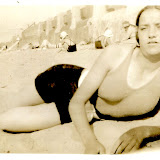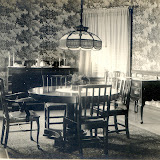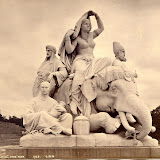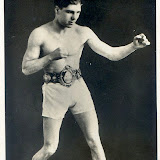Beach Snapshots, 1910 – 1950s
The sea rises, the light fails, lovers cling to each other, and children cling to us. The moment we cease to hold each other, the moment we break faith with one another, the sea engulfs us and the light goes out.
James Baldwin
Switzerland doesn’t have a beach. Neither do the Czech Republic, Hungary, Turkmenistan, Chechnya, Laos, Chad, Zimbabwe and Botswana, for starters. The people from those lands never know what it means to gaze out across an empty sea and contemplate its space, which is the same as meditating on life’s alternatives. More, or worse, than that, they never feel the erotic charge of the beach. It’s not something to be discovered on a rare trip to the seaside. It has to be deep in the psyche and so intrinsic as to be taken for granted. People who grow up with the beach head off each summer to be semi naked with thousands of others, drop their pretence at being adults and return to that primeval state where they splash and scream like little children. The next day they knot their ties, polish their shoes and go to work where they assume a mask of mature, responsible dedication. It’s not wildly different from the medieval carnivals where, for a few days each year, the citizens went into a carnal frenzy before the church bell tolled the return to normalcy.
Some time ago, a film maker discovered that one way to let the audience know the actor was in a profoundly melancholic mood was to have him or her walk alone up a deserted beach. Even the Czechs and Laotians who had never seen the seaside understood what was going on. Today in Turkey, the land of the hyperglycaemic video clip, it’s like Mum’s recipe for baklava; no need to change what’s always worked so well. Thing is; most of us beach dwellers have at some time found ourselves on an empty stretch of coast, pondering life’s sharp turns. It draws us, especially when the circumstances demand a particular, self-absorbed sentimentality. It’s no good, for example, if a real tragedy has occurred. That requires serious grieving, ideally in a small, enclosed space like a bedroom. The beach is the place to go when that brief relationship we both knew was flawed has come to an end. The questions we ask are rhetorical because we know the answers very well. Answers aren’t the point anyway; it’s the emotion. In other words, we may be feeling down and philosophical but we’re still enjoying ourselves, enormously.
Technically, the beach is the worst place to take a camera. Sand scratches the lens, salt air is corrosive and seawater can rust a camera in a matter of hours. Still, we must bring it along. The beach is one of our ritual zones, a place we can behave in ways we can’t anywhere else and if we don’t have the camera to record the moment it could be lost forever. These photographs come from Turkey, Australia, Britain, the USA and a Melanesian island and were taken between 1910 and the 1950s. They prove that no matter where we come from, when we get to the beach we behave the same ways, and the only thing that has changed in the last 100 years is the swimsuit.
 |
| ON THE BEACH |






















